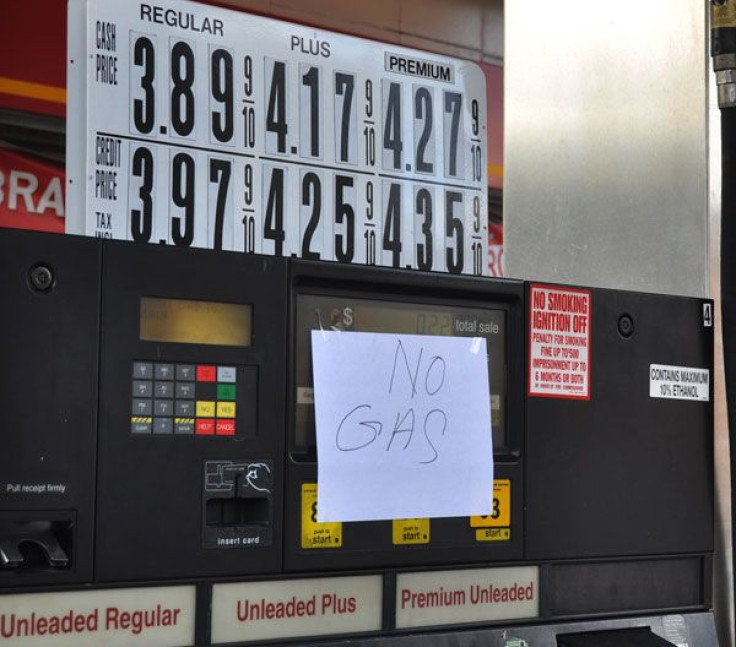Fuel-Starved Residents of Northeast Overrun Gas Stations After Hurricane Sandy

Cars were lined up for blocks Friday at a Hess gas station in the New York City borough of Queens. Four blocks away another station sat empty; it had ran out of fuel as thousands of people poured in from areas that had lost power in this week’s Hurricane Sandy superstorm that left millions in the dark.
“We sold out yesterday. Normally we have two busy times a day: one for the morning taxis and in the evening shift,” said Nikos Gianopoulos, manager of a Getty station in Astoria. “Our distribution center is out. We hope to get gas; maybe tomorrow. If that happens there will be 10 miles of cars waiting to fuel.”
Similar scenes were playing out across the tristate area. As commuters try to return to their normal routines, and as temperatures fall, millions of people are scrambling to find gasoline stations with power – overrunning available outlets in areas with power, in some cases burning fuel to drive 20, 30, 40 miles to top off tanks and fill gasoline canisters. The storm may be gone, but its effects on one of the most densely populated areas of the United States endures – from darkened high-rises in Manhattan’s Lower East Side, to storm-ravaged Staten Island, to darkened middle-class suburbs in New Jersey.
“The neighborhood is humming with generators,” said Usama Hussein, a 26-year-old Columbia University student who lives with family friends in Elizabeth, N.J., in an area that has been without power since Tuesday.
Those generators need fuel.
“If you don’t have electricity at the depots which fill the (gasoline) delivery trucks, or if you don’t have electricity at a retail station then you really can’t sell gasoline to the public,” John Hofmeister, CEO of Citizens for Affordable Energy and former president of Shell Oil, told CBS This Morning on Friday.
According to the AAA, which tracks gasoline prices, 13 out of 34 fuel terminals – where gas trucks fill up to deliver the fuel to stations – were without power. Seven out of 10 gas stations on Long Island could not pump gas. Sixty percent of these outlets were out in New Jersey, too.
“I’ve been pumping gas for 36 hours; I pumped 17,000 gallons,” Abhishek Soni, owner of an Exxon station in Montclair, told The New York Times. Nearby, police had been called in to direct traffic and calm frustrated drivers. In Union, N.J., a Sunoco gasoline station was being overrun with vehicles.
For some older residents, the images of hundreds of impatient customers lined up at a gas station conjure up memories.
“It’s like the early '70s out there,” said David Brauner, a 52-year-old Queens resident, referring to the gas shortage caused by the 1973-74 oil embargo on the United States following the Yom Kippur War.
But unlike that event, which saw drivers nationwide overrunning gas stations in a massive consumer fuel grab, there is no current nationwide shortage. In fact, fuel prices in other parts of the country have gone down in the past week due to the blackouts. On Thursday AAA reported that the average price of gasoline in the Lone Star State was 12 cents lower than the previous week, to $3.30 a gallon, 25 percent lower than usual for this time of year.
© Copyright IBTimes 2024. All rights reserved.












